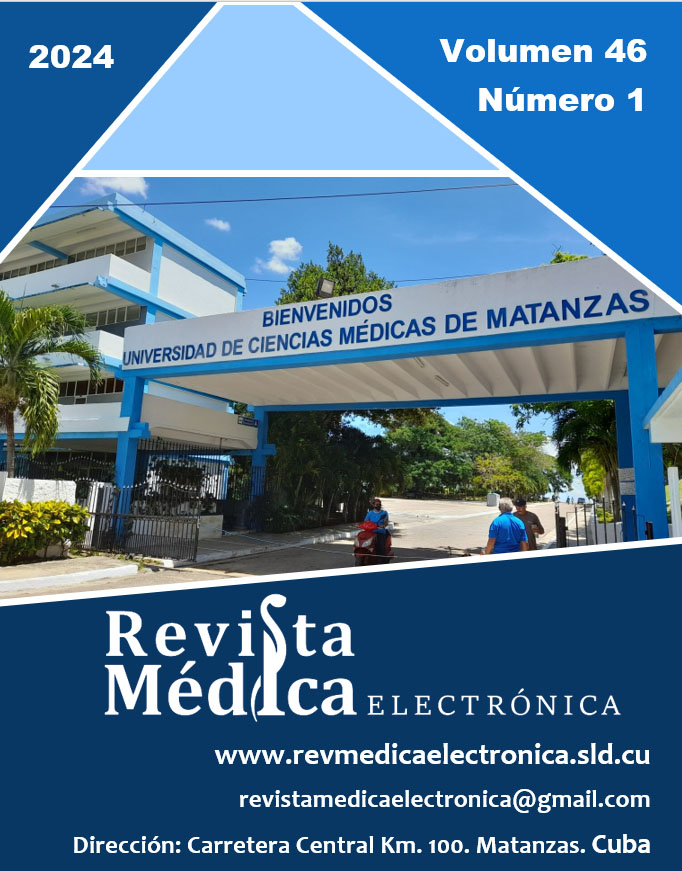Proceso de atención de enfermería en el traumatismo craneoencefálico severo. A propósito de un caso
Palabras clave:
traumatismo, proceso de atención, cuidados, enfermeríaResumen
El traumatismo craneoencefálico se considera una lesión de la cabeza, resultante de un trauma penetrante o cerrado por fuerzas de aceleración y desaceleración, que resultan en una o más de las siguientes situaciones: disminución del nivel de conciencia, amnesia, alteración del estado mental en el momento de la lesión, anormalidades objetivables neurológicas o neuropsicológicas, y fractura de cráneo o lesiones intracraneales. En las últimas décadas, se han producido grandes cambios en la profesión de enfermería, uno de los cuales ha sido la introducción del proceso científico a sus actividades, que permite aplicar el marco teórico de la profesión. El objetivo de este trabajo es presentar un caso de traumatismo craneoencefálico y vincularlo al proceso de atención de enfermería. Se trató de una adolescente de 16 años de edad, de raza blanca, que ingresó en la Unidad de Cuidados Intensivos del Hospital Pediátrico Docente Provincial Eliseo Noel Caamaño, de Matanzas. La vinculación de este caso con el proceso de atención de enfermería permite un elevado grado de interacción con el paciente, herramienta básica y primordial en la labor cotidiana del personal de enfermería involucrado en el cuidado humanizado en una unidad de atención al paciente crítico.Descargas
Citas
2. Alemán Araguillín RA. Incidencia de traumatismo craneoencefálico en usuarios que acudieron al “Hospital San Vicente de Paúl” en el periodo 2015-2017 [tesis en Internet]. Ibarra: Universidad Técnica del Norte; 2019 [citado 02/06/2020]. Disponible en: http://repositorio.utn.edu.ec/bitstream/123456789/9339/2/06%20ENF%201039%20TRABAJO%20GRADO.pdf
3. De Lima Gomes AT, da Fonseca Silva M, da Silva Dantas BA, et al. Perfil epidemiológico das emergências traumáticas assistidas por um serviço pré-hospitalar móvel de urgencia. Enferm Glob [Internet]. 2016 [citado 18/01/2019];16(1):384-94. Disponible en: http://revistas.um.es/eglobal/article/view/231801
4. Morales Camacho WJ, Plata Ortiz JE, Plata Ortiz S, et al. Trauma craneoencefálico en Pediatría: La importancia del abordaje y categorización del paciente pediátrico en el servicio de urgencias. Pediatr [Internet]. 2019 [citado 10/01/2023];52(3):85-93. Disponible en: https://revistapediatria.org/rp/article/download/121/100/1214
5. Cardona Pineda SM, Estrada I, Anariba R, et al. Caracterización clínico-epidemiológica de Traumatismo Craneoencefálico Severo Pediátrico en Hospital Nacional Mario Catarino Rivas 2016-2018. Acta pediátr hondu [Internet]. 2019 [citado 10/01/2023];10(1):978-95. Disponible en: https://pesquisa.bvsalud.org/portal/resource/fr/biblio-1049529
6. Appenteng R, Nelp T, Abdelgadir J, et al. A systematic review and quality analysis of pediatric traumatic brain injury clinical practice guidelines. PLoS One. 2018;13(8):e0201550. DOI: 10.1371/journal.pone.0201550.
7. López-Cata FJ, Matos-Santisteban MA, Mosquera-Betancourt G. Caracterización del trauma craneoencefálico en edades pediátricas en el Hospital Manuel Ascunce Domenech de Camagüey, enero 2015-diciembre 2018. EsTuSalud [Internet]. 2020 [citado 10/01/2023];2(1). Disponible en: https://revestusalud.sld.cu/index.php/estusalud/article/view/21/18
8. Sanjuán Baltar A. Evaluación de los conocimientos de enfermería ante el manejo inicial, movilización e inmovilización del paciente politraumatizado en el servicio de urgencias del complejo Hospitalario Universitario de A Coruña [tesis en Internet]. Coruña: Universidad de La Coruña; 2019 [citado 10/09/2019]. Disponible en: https://ruc.udc.es/dspace/handle/2183/24135
9. Caetano da Silva MI, Gomes da Silva RR, Santos Nogueira SH, et al. Diagnósticos de enfermería para pacientes con traumatismo craneoencefálico: revisión integradora. Enferm Glob [Internet]. 2021 [citado 25/10/2021];20(4):584-628. Disponible en: https://scielo.isciii.es/scielo.php?script=sci_arttext&pid=S1695-61412021000400584
10. Ferreira Louro AL. Estratégias para o cuidado humanizado à pessoa em situação crítica [tesis en Internet]. Lisboa: Universidad Católica Portuguesa; 2014 [citado 09/04/2020]. Disponible en: https://www.proquest.com/openview/bc389418353ea7219f410701beaa3c32/1?pq-origsite=gscholar&cbl=2026366&diss=y
11. Ibáñez Gabarrón AM, Rojo Atenza E, Núñez García O, et al. Importancia de la metodología enfermera en la mejora de la calidad de los cuidados en el paciente con traumatismo cráneo-encefálico grave. RECIEN [Internet]. 2013 [citado 10/01/2023];1(7). Disponible en: https://rua.ua.es/dspace/bitstream/10045/44965/1/RECIEN_07_05.pdf
12. Vargas Rodríguez IC. Repercusión de las intervenciones de Enfermería sobre la presión de perfusión cerebral en pacientes con lesiones cerebrales [tesis en Internet]. Medellín: Universidad de Antioquía; 2005 [citado 10/01/2023]. Disponible en: https://bibliotecadigital.udea.edu.co/bitstream/10495/167/1/VargasIsabel_2005_RepercusionLesionesCerebrales.pdf
Publicado
Cómo citar
Número
Sección
Licencia
La misma permite:
• Copiar y redistribuir el material publicado en cualquier medio o formato.
• Adaptar el contenido.
Esto se realizará bajo los siguientes términos:
• Atribuir los créditos de los autores e indicar si se realizaron cambios, en cuyo caso debe ser de forma razonable.
• Uso no comercial.
• Reconocer la revista donde se publica.
Se mantienen los derechos de autoría de cada artículo, sin restricciones.







